All products featured are independently chosen by us. However, SoundGuys may receive a commission on orders placed through its retail links. See our ethics statement.
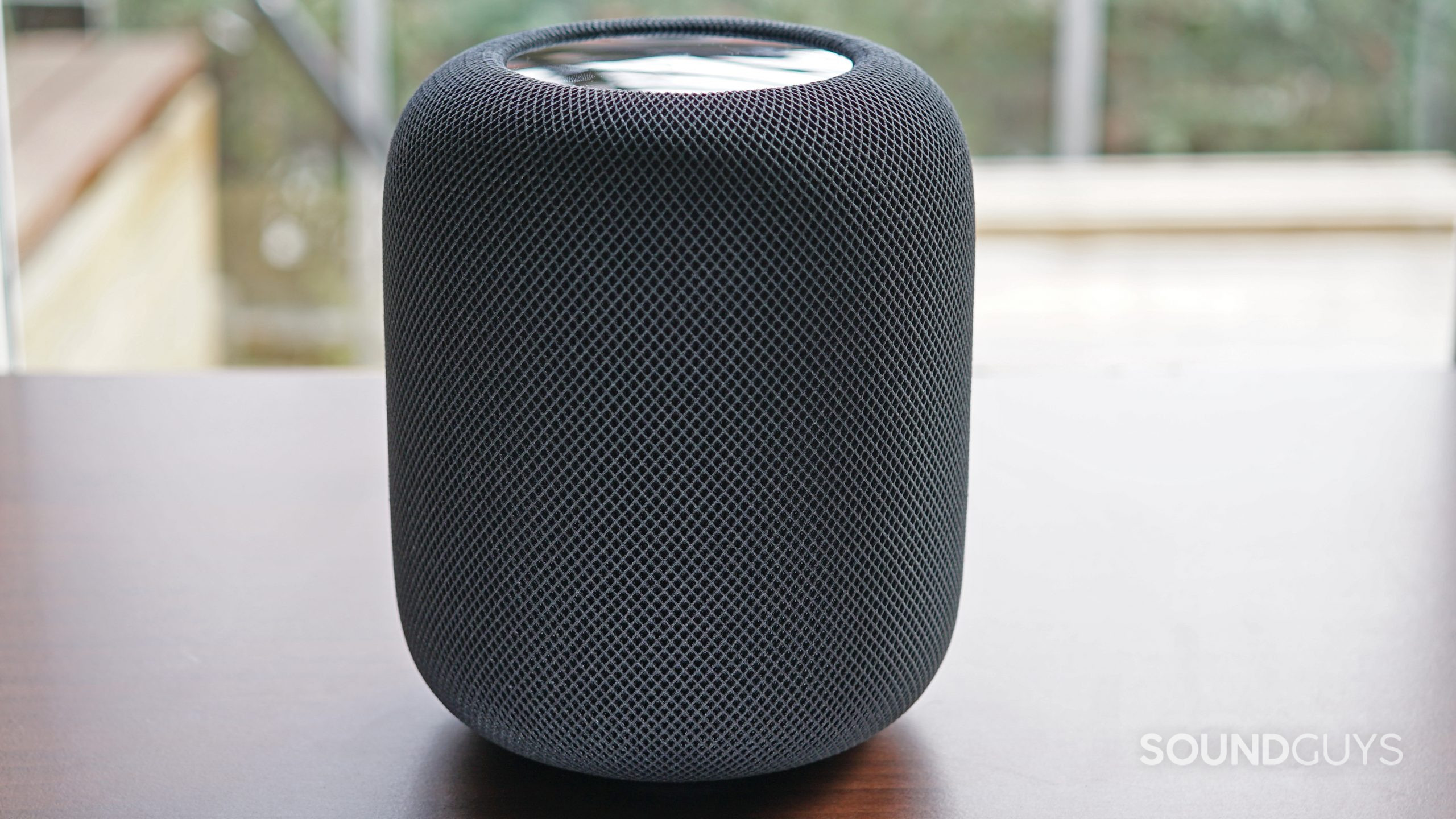
Apple HomePod (2nd Generation) review
Published onMarch 16, 2023
Apple HomePod (2nd generation)
The original HomePod was one of Apple’s only recent product failures (in a relative sense—it still sold millions of units), discontinued without a replacement two years ago. Since then the HomePod Mini has been slowly rekindling Apple’s smart home hopes, and now we’ve got a new mainline smart speaker. The Apple HomePod (2nd Generation) is very reminiscent of its predecessors, with some internal improvements, but few distinguishing features.
Is the mere fact of its existence enough to justify a purchase this time?
What you need to know about the Apple HomePod (2nd Generation)
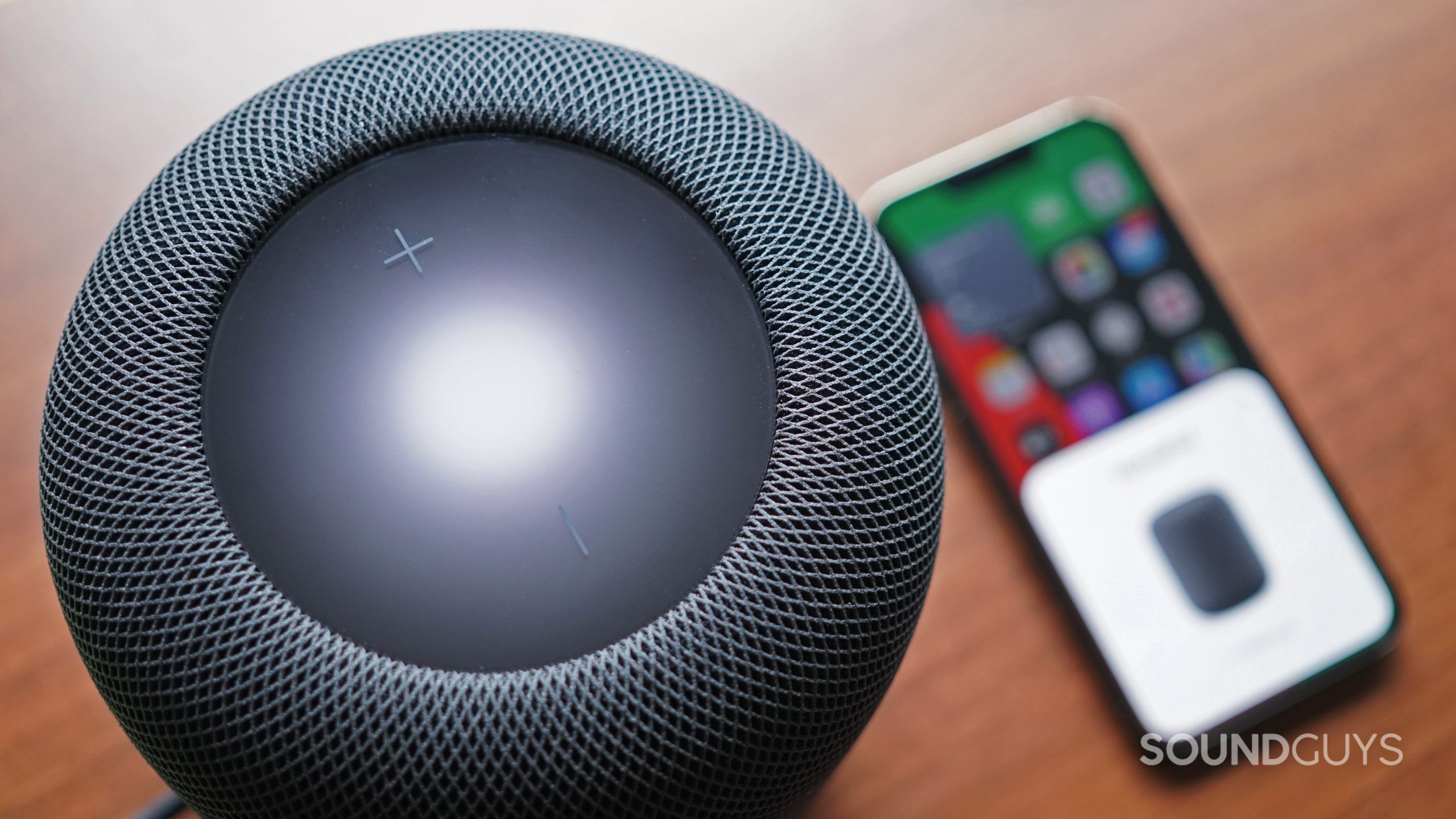
Apple HomePod (2nd Generation): $299 USD /349,00 € /£299 / $399 CAD
The Apple HomePod (2nd Generation) is Apple’s newest smart speaker, and like most virtual assistant vehicles, it’s a pretty spartan hardware offering based on its external appearance. Like other HomePod products, the 2nd gen unit has a nice heft to it, weighing in around 2.3kg (a little over 5lbs). It’s cylindrical just like the first gen model, and covered in the same spongy mesh fabric. Basically, it looks a lot like the other HomePods.
Inside the speaker is a high-excursion woofer and five tweeters, and it is also loaded with microphones to always pick up your voice, no matter what’s playing. In addition to its capacity as a single speaker, you can also sync your HomePod (2nd Generation) with another HomePod for stereo audio. There’s also an advanced computational audio system to tailor the sound based on where the HomePod sits in your room.
However, most people aren’t buying a smart speaker for its hardware features—just like an Amazon Echo or Google Nest Audio, you buy this for access to smart home integration and virtual assistant access. The Apple HomePod (2nd Generation) is fully compatible with the Apple software ecosystem. You can sync it up for AirPlay from any compatible device. You can ask Siri whatever you like. You can control devices hooked up to Apple’s Home app. All the smart speaker stuff you could want is here, as long as you want it within Apple’s ecosystem.
What’s good about the Apple HomePod (2nd Generation)?
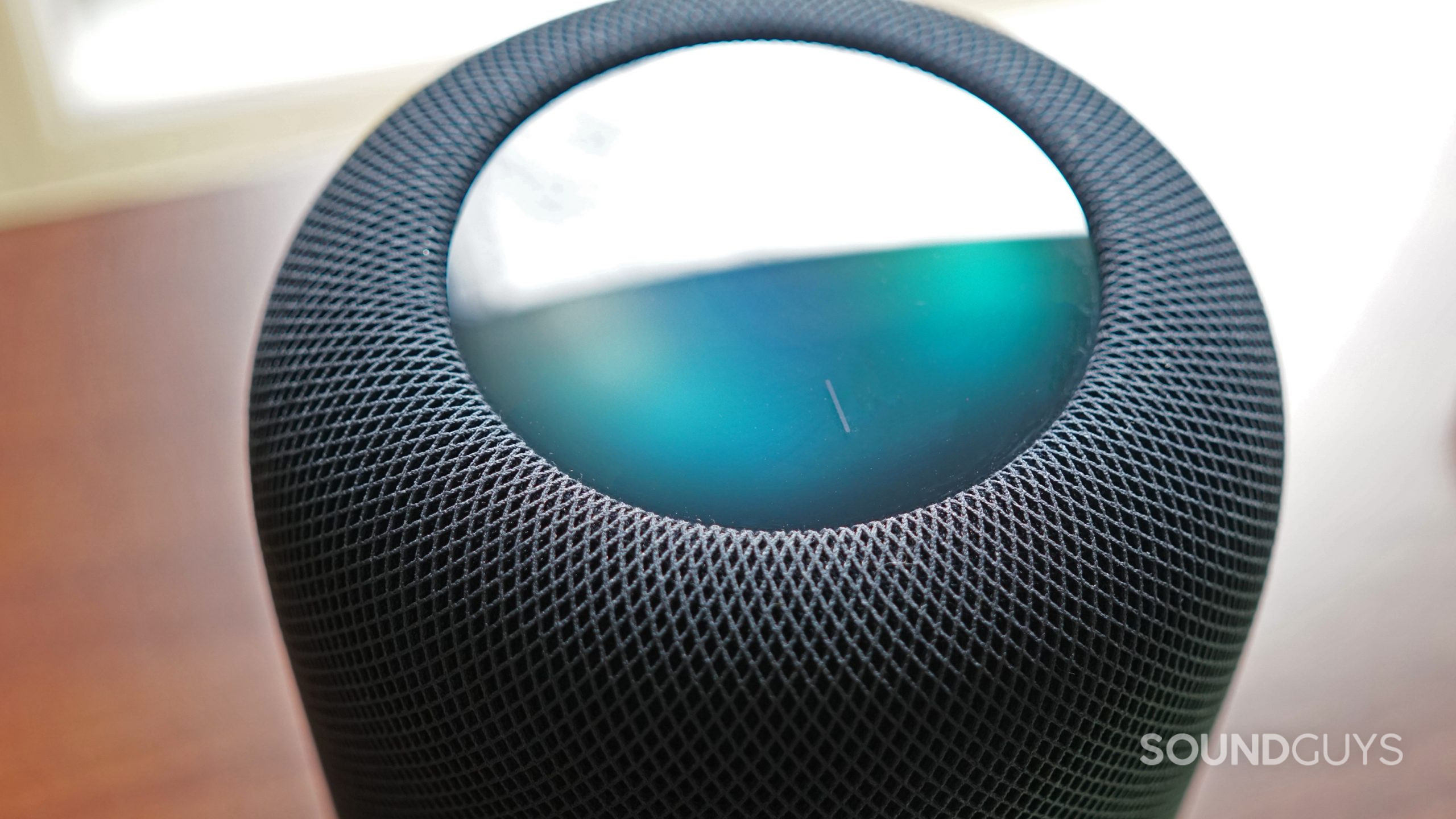
First, the most important thing—the Apple HomePod (2nd Generation) sounds pretty nice. The woofer adds a really noticeable bassy rumble, and instrumental and vocal parts of songs come through clearly. At high volumes, some subtler instrumentals and vocals can get a little lost in busier tracks. However, if you don’t mind that, this will get plenty loud for most rooms or even small parties. It makes sense you can get a pair of HomePods together to function as stereo speakers for your television (through Apple TV and AirPlay), because this will definitely achieve the volume levels you’d want in a home theatre environment.
The HomePod is also very easy to use with Apple devices, as one would expect. Setting up just takes holding a recent iPhone over the HomePod and you’re off to the races. The Home app interface is responsive, and playing music through Apple Music or Apple Podcasts is basically automatic. Anything that’s connected to the same Wi-Fi connection and supports AirPlay can access the HomePod very easily, too—If I set my MacBook Air’s audio output settings to AirPlay, I can use the speaker for wireless computer audio throughout my apartment.
Physically, the speaker is small enough to work just about anywhere in your house. The footprint is small enough that desktop and countertop spots are easy to find, and it’s narrow enough to fit on a bookshelf without any issues. The computational audio feature also means it will adapt to those different environments to sound its best. However, the included cord is a little on the short side, at 1.5 meters, so you will need to be a little judicious with where you place it.
Talking to Siri works reliably well. I’ve never had any issues with the speaker not picking up my voice, regardless of what music or podcast I’m listening to. As for how well Siri works as a virtual assistant, there’s not much to say here; if you’ve used an iPhone, iPad, or MacBook, you know what to expect.
What’s not so good about the Apple HomePod (2nd Generation)?
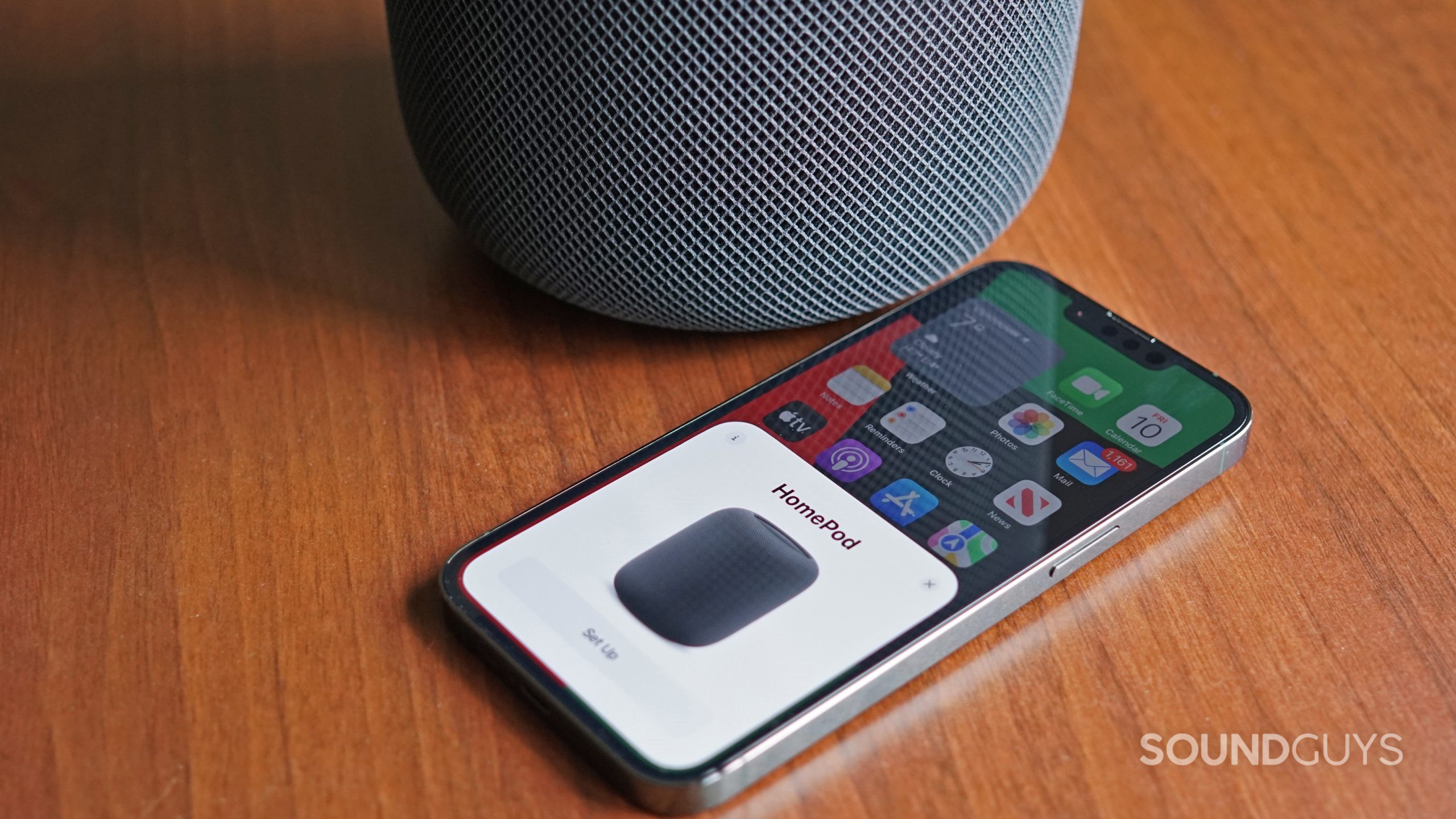
The Apple HomePod is not a perfect product, by any means. If you aren’t already all-in on Apple’s device ecosystem, you shouldn’t buy it. It doesn’t matter if you’ve got the newest M2 MacBook, if you don’t have an iPhone, you can’t even set the dang thing up. Even if you do have all those devices, but you’re more invested in a music streaming service like Spotify, it’s still probably worth reconsidering buying this.
If you use a streaming service that hasn’t yet added support for the HomePod or AirPlay, the only way to play music using the HomePod is by using your device’s built-in AirPlay support—Not the service itself, but the device. This solution often isn’t perfect. When I use the HomePod as my MacBook’s audio output over AirPlay, audio frequently skips and pauses. It sounds similar to a scratched CD. Audio-visual lag is also a frequent issue.
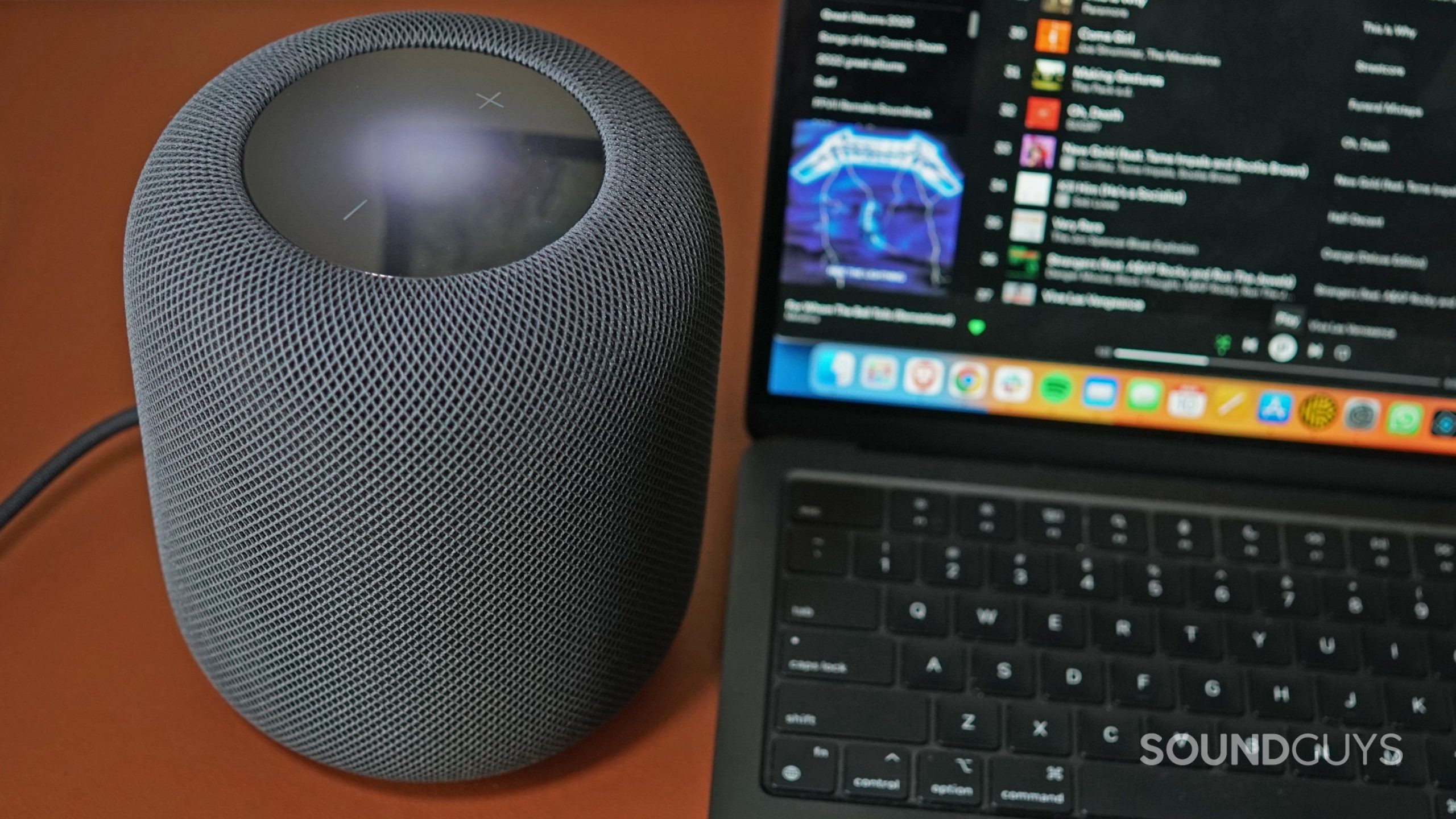
I don’t mean to harp on this to elevate what is admittedly a fairly minor concern, but rather to illustrate that if you’re not using the device with the most mainstream methods, you’re going to run into problems. Don’t jury rig it, you’re just going to come away disappointed.
Speaking of disappointment, if you are hoping the Apple HomePod (2nd Generation) will have notable new features or differences compared to the Apple HomePod mini from 2020, you won’t find much. The size and shape of the speakers are really the only big differentiating factor between them. The internal drivers are also different, but you won’t find something like a wired output option on one or the other. Basically, this is $200 USD more for a louder version of the same thing.
Much like with the original Apple HomePod, the new model is reportedly leaving a ring-shaped mark on wooden surfaces if it sits there long enough. I never ran into this during the review period, but the model I reviewed came to me after the team at our sister site Android Authority had already put it through it’s paces. Fresh out of the box, it’s definitely still something to be wary of.
Apple HomePod (2nd Generation) specs
There’s a lot going on under the hood of the Apple HomePod (2nd Generation). Some of it, we’ve already gone over, some it we haven’t. Here’s what you should know:
| Apple HomePod (2nd Generation) | |
|---|---|
Size | 168 x 142 x 142mm |
Weight | 2.3kg |
Audio specs | 4-inch high-excursion woofer 5x horn-loaded tweeters |
Wireless audio connection | Bluetooth 5 802.11n Wi-Fi Apple AirPlay 2 |
Streaming services | Apple Music Apple Podcasts iCloud Music Library |
App | Home app (iOS) |
Controls | Touch panel |
Price | $299 USD |
Apple HomePod (2nd Generation) review: Should you buy it?
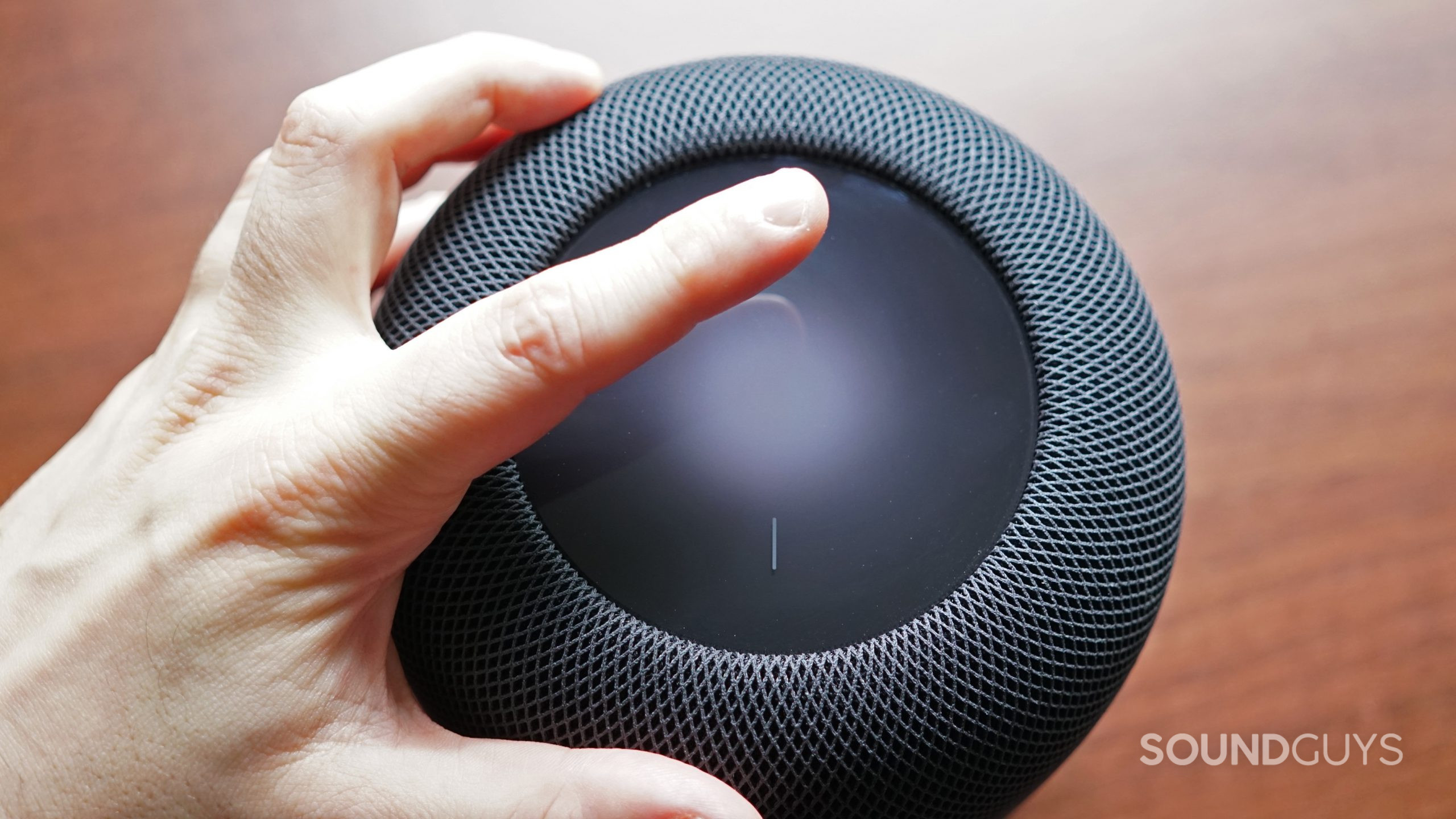
If you’re all in on Apple, and you’ve already got a smart home setup to take advantage of, you should consider the Apple HomePod (2nd Generation). It’s just as nicely built as everything else Apple makes, and its low-key design should fit in with the aesthetics of your space. However, everyone else should probably think twice.
People with non-Apple products should definitely stick with one of the more open smart home speaker options, like the Google Nest Audio or even the Amazon Echo Dot. If you’re uncomfortable with the amount of data collection involved in smart home or virtual assistant devices, you’re probably better off sticking with a regular Bluetooth speaker. The Sony SRS-XE300 is $100 USD cheaper than the HomePod (2nd Generation), plus it sounds better and it’s portable. Its bigger sibling, the SRS-XG300 is also a great buy, especially when it’s on sale.

Frequently asked questions about the Apple HomePod (2nd Generation)
It’s not bulky, but this isn’t a battery powered speaker. It has stay plugged and connected to Wi-Fi for it to work properly. That makes for a pretty stationary product.